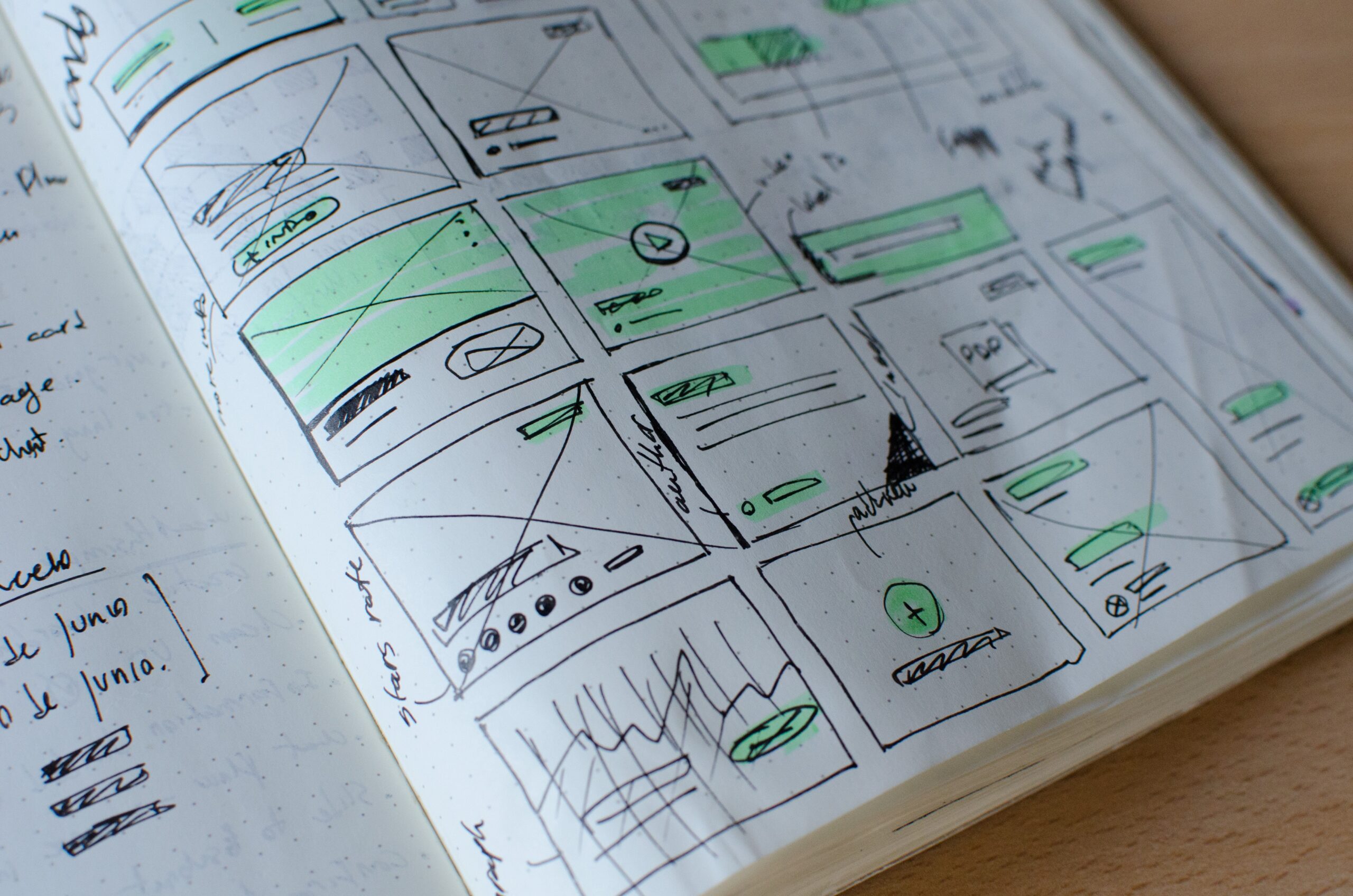Last year, we went over 2019’s most essential business-to-business marketing tools and strategies. But with fall almost here – sigh – it’s time to look ahead to 2020’s hottest B2B marketing trends.
You’re going to notice a theme in the eight trends we cover. Writ large, it’s that we’ve reached – and passed – “peak marketing.”
Over the last 15 years or so, we’ve seen the mercurial rise of marketing technology, content marketing, easy-access digital advertising and a slew of other strategies and tactics.
2020 is the year that things start to come back to reality.
Here’s what I mean:
Technology-driven marketing went through an amazing growth period between 2005-2010. Things exploded. Everyone went out and bought everything. You could send a million emails and target prospects in a second. Tech become democratized, tools were continuously developed and everything was chugging along at full speed.
What was impossible 20 years ago became possible 15 years ago and then commonplace 10 years ago.
Then the industry started overdoing things. Strategic B2B marketing started to become doing things for the sake of doing things. Using data smartly turned into having data, period.
That’s why we predict that 2020’s biggest B2B marketing trend will be a pullback toward what works and what is smart. As an industry, we’ll adopt a more “thinking” view of marketing rather than “because you can.”
With that (admittedly cynical) thesis in mind, here’s our list of eight must-know B2B marketing trends for 2020.
What are the biggest 2020 B2B Marketing Trends?
- Consolidating excessively large MarTech stacks
- Fewer cheap, theme-based websites
- Focus on meaningful data, not vanity metrics
- Less marketing for the sake of “good marketing”
- Smarter, more targeted PPC advertising
- Blurred lines between marketing and sales
- Less use of traditional B2C tools
- More quality content being produced
Trend #1: MarTech Consolidation

You probably have too many marketing technology systems in place. Here’s how we know.
It’s very common for us to start a relationship with a client and find that they have something like nine MarTech solutions in place. It’s all this stuff they bought. Sometimes they’ll have two automation systems, some account-based marketing software, a few data acquisition platforms, a CRM that only sales actually uses and some weird analytics packages that exist … because. It’s crazy. Few ever stopped adding MarTech to their stack – they just kept buying. The more tools the better, right?
Not necessarily.
We predict that 2020 will feature a trend of companies looking to cut back on their MarTech spend and focus on on what actually works.
You’ll see a smaller, leaner group of technology providers thriving. That’s good news for all-in-one providers and those that offer truly differentiated solutions. (Unbounce, we’re looking your way.)
Systems that don’t provide much value – think of the myriad “analytics packages” that only suck basic Google Analytics data into the WordPress dashboard – are going to be abandoned in droves.
2020 will also likely be a very good time for talented B2B web developers. A lot of functionality is currently injected into websites via lightweight plugins that do little more than stick some Javascript in the header. Security concerns and a desire for a leaner MarTech stack are going to make those go away.
(Plus, those tools are the same everywhere. Everyone gets the same popup when they visit a website, and quite frankly, everyone is sick of it. What was revolutionary 10 years ago is now becoming commonplace – and boring. Devs will focus on high-quality experiences that they own.)
Trend #2: Downfall of the Theme Site

Pre-built WordPress themes are ubiquitous, and for good reason. They’re cheap to buy, easy to develop on and super, super fast to deploy.
All that aside, we see established companies moving away from them in 2020.
In recent years, we’ve seen the market for cheap new websites start to dry up. Firms are either investing in developing high-end custom WordPress sites with a unique experience and premium brand in mind, or fixing up their old sites.
New sites built on pre-built themes and frameworks are simply not as attractive as they once were. And we anticipate that that trend will continue in 2020.
Why?
Visitors know it’s a theme. There are 50,000 other websites using that same exact framework. It’s not impressive anymore.
To grab users’ attention, it’s important to deliver an experience that’s truly special and differentiating. While they’re fine as a temporary fix, WordPress themes don’t do that.
Theme #3: Focus on Meaningful Data

As Google Ads, Google Analytics and automation platforms became ubiquitous, so did B2B marketing data. “Data-driven” marketers suddenly had everything they could dream of … and more.
Click-through rates by variant, daypart and geography. Ad impressions by domain. “Engagement” on social platforms. Everything. All of this stuff was trying to trick people into thinking they were quantifying something. In reality, they were looking at these numbers and coming up with conclusions based on “junk data.”
Let’s look beyond “peak” data.
We are now a more sophisticated industry, and the 2020 B2B marketing trends include a push toward meaningful metrics.
You’re going to see both in-house marketers and digital agencies think long and hard about what data they’re using to make decisions. The winning metrics are going to be things that actually affect the bottom line – not our own vanity.
Think about search engine marketing. Do you really care about how many folks saw your PPC ad? Or is it more important to know which keywords drove the most conversions at an acceptable cost-per-acquisition?
Trends point to the latter becoming the focus of data-driven business-to-business marketing in 2020.
Trend #4: Focus on the Prospect

Focus on your client. Your user. However you want to put it.
Marketers are kind of vain by nature. That combined with a ton of junk data and all the tech in the world made it easy to do things because we liked them, or because other marketers liked them. Or maybe even because they got called out in the press as “great marketing.”
Truth be told, “great marketing” is meaningless. It’s something we say to congratulate ourselves.
The only people who really matter are the people we’re marketing to. Perhaps this is a bit hopeful, but 2020’s B2B marketing trends should include a (re)focus on delivering experiences and messaging that get the attention and wallet share of potential buyers.
If the marketing community stops worrying about self-fulfillment and self-aggrandizement, they’ll be able to put the focus back on what really matters – moving the revenue needle.
Trend #5: Smarter Use of Google PPC
Google Ads is mature and increasingly easy to use. In recent years, that’s led to just about every B2B company deploying search ads in some way, shape or form.
Problem is, that’s driven the cost up on a whole lot of terms.
Google Ads search advertising is essentially an auction. You tell Google what you’re willing to pay if someone clicks one of your ads, and Google decides if and where to show you.
But you don’t just “bid on keywords.” You can choose to match very broadly, or very specifically.
That means massive companies with multi-million-dollar PPC budgets can drive up bids on terms that have nothing to do with them. If you want to include “software” in your keywords, you’ll probably pay a good $40-50 a click because of competitors that have nothing to do with you and your industry. “Automation” and “AI” have similar results.
In 2020, we’ll see people change their bidding strategies to become focused on who the buyer is and what they want.
Say you’re selling CRM software. That’s a $75 click – way out of the budget for 99% of companies. Instead, trends point to smart marketers focusing their bidding strategies around the problem potential customers are trying to solve, and avoiding the high-dollar terms that come along with a forlorn hope bidding strategy.
Halftime: Time for Marketing Trivia!
Do you know what the commonly cited “most expensive PPC keyword” is?
Spoiler alert: It’s not “software.”
It’s “mesothelioma.”
One study showed that the 10 most expensive searches all included the term. At more than $200 per click.
Surprised? Don’t be.
Mesothelioma settlements can easily surpass $1 million, and lawyers get a significant cut. If a patient is worth a guaranteed million bucks, they’d be more than happy to pay $10,000 or more to represent him or her.
Back to the B2B marketing trends!
Trend #6: Sales Enablement

We’ve seen a change in the marketing realm. The line between marketing and sales has eroded to the point of nonexistence. That’s why a core B2B marketing trend for 2020 revolve around sales enablement.
Another way to put it: Marketing folks will now work a hybrid role.
The main function of this hybrid role would be nurturing the prospect through the entire partnership, from their first interaction through evangelism.
It’s not going to be enough to simply hand over marketing-qualified leads (MQLs) and hope for the best. Marketing needs to understand exactly what sales needs and help support their effort through the close – and beyond.
This means non-traditional lead nurturing, targeted advertising to coincide with demos and proposals, pre- and post-purchase email cycles and more.
Trend #7: Continued Differentiation from B2C

As B2B marketing has grown and matured, more and more marketers are brining traditional B2C techniques to the business-to-business world.
Here’s the deal with that.
Some of it works. But a lot of it doesn’t. When you’re looking for B2B lead generation, you’re trying to reach hyper-specialized targets. B2C-style mass outreach tools – think Facebook advertising in many cases – are simply too blunt to be effective.
The trend for 2020 should be a push toward highly targeted marketing based on both demographics and predicted behavior. You’re going to see messaging more geared toward specific industry segments, specific companies and even specific individuals, disseminated with scalpel-like precision.
Remember: “B2B” doesn’t mean less creative or engaging than B2C. It’s all about the strategic approach. That means gaining a better understanding of the specific prospect, where they belong, and best practices on how to target them – not 10,000 people who vaguely resemble them.
Trend #8: Reduction in Garbage Content

We’re past peak content marketing.
Thanks goodness.
In the last few years, we’ve talked to plenty of people about content marketing. They want content. They need content.
Why?
Because “content.”
Content marketing is not for everyone. When you’re producing content for content’s sake, you’re probably creating garbage. There’s no value to the user, and even if you end up ranking on Page 1 of Google’s results, you’re not going to convert anyone.
We couldn’t be happier to say that a B2B marketing trend for 2020 will be the end of people writing just for the heck of it. You might see more content produced, which is inevitable, but smart people will ask why they’re doing what they’re doing, and what value they’re providing.
Even if your trash content gets traffic, you’re still giving people trash. Remember that.
This kind of content will be exchanged for high quality, useful stuff.
We hope.
B2B marketing is constantly changing. Need an agency partner with their eye on the future? That’s Altitude. Give our B2B marketing pros a buzz so they can keep you ahead of the game.



